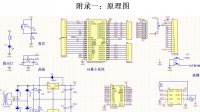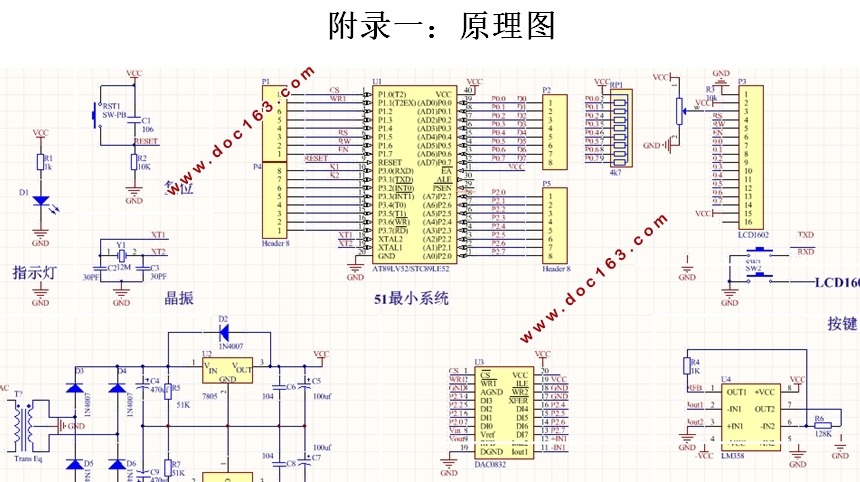基于单片机程控放大电路设计

基于单片机程控放大电路设计(开题报告,论文11600字)
摘要
在数字化技术不断发展的今天,各类测量仪表越来越趋向于数字化和智能化。在自动控制系统或智能仪器中,当被测信号的幅值的变化范围很大时,为了保证测量的精度,经常会采取改变量程的方法。在实际应用中,我们不希望也不方便采取手动调节改变增益的方式。使用程控放大器可以很好的解决这个问题,实现量程的自动切换,从而提高A/D转换的有效精度。本设计中采用数模转换器DAC0832,以其内部的电阻网络为核心,利用STC89C52单片机进行控制,实现了一种增益可调的程控放大器并通过LED显示屏进行显示。程控放大器的增益由单片机输出的数字量进行控制,这种程控放大器具有电路简单、增益调整方便、成本低的特点。在电子技术和计算机技术日新月异的今天,程控放大器有着广大的应用前景,并且将朝着集成化、智能化、多功能化的方向发展。
关键词:STC89C52 DAC0832 LED显示屏 运算放大器
The design and realization of programmable amplifier based on single-chip microcomputer
Abstract
With the development of digital,all kinds of measuring instruments tend to be more and more digital and intelligent.In the automatic control systems and intelligent instruments,when the amplitude of measured signal ranges much,in order to ensure the accuracy of measurement,we change the range to realize it.In practice,we don’t want to take the measure that change the gain by manual adjustments.Using programmable amplifier can solve the problem well.It can realize the automatic switch of range to promote the effective resolution of A/D conversion.The design uses
DAC0832,depends on its internal resistor network.Take STC89C52 to control it and can make the transmission gain be adjusted by procedure come true,then displayed by means of LED screen.The gain of programmable amplifier is controlled by the output digital of SCM.This programmable amplifier has the advantages of simple circuit,gain can be adjusted easy and cost low.Nowadays,electronic technology and computer science changes quickly,programmable amplifier has a broad prospect and will move toward to the direction of integrated,intelligent and multifunctional.
Keywords:STC89C52;DAC0832;LED screen,operational amplifier



目 录
摘要 I
Abstract II
第一章 绪论 1
1.1主要内容 1
1.2背景及意义 1
1.3论文结构 2
第二章 整体方案设计 3
2.1整体方案选型 3
2.2核心模块的选择 4 [资料来源:Doc163.com]
2.2.1主控芯片的选择 4
2.2.2放大模块的选择 4
2.2.3按键模块的选择 5
2.2.4显示模块的选择 6
第三章 硬件电路设计 7
3.1单片机 7
3.1.1时钟电路 7
3.1.2复位电路 7
3.1.3电源电路 8
3.2放大电路设计 8
3.2.1DAC0832电路设计 8
3.2.2运放输出电路设计 10
3.3人机接口电路设计 11
3.3.1独立按键电路设计 12
3.3.2液晶显示电路设计 12
第四章 软件设计 14
4.1主程序的设计 14
4.2程控放大实现 15
4.2.1按键模块程序设计 15
4.2.2D/A转换模块程序设计 16
4.3LED显示程序设计 17
4.4程序编译 17
4.5Proteus仿真 18
第五章 调试与总结 21
5.1硬件调试 21
5.3展望 22
5.4小结 22
参考文献 23
致谢 24
附录一:原理图 25
附录二:源程序 26 [来源:http://www.doc163.com]
